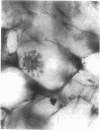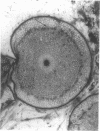Abstract
The discovery of arbuscules in Aglaophyton major, an Early Devonian land plant, provides unequivocal evidence that mycorrhizae were established >400 million years ago. Nonseptate hyphac and arbuscules occur in a specialized meristematic region of the cortex that continually provided new cells for fungal infection. Arbuscules are morphologically identical to those of living arbuscular mycorrhizae in consisting of a basal trunk and repeatedly branched bush-like tuft within the plant cell. Although interpretations of the evolution of mycorrhizal mutualisms continue to be speculative, the existence of arbuscules in the Early Devonian indicates that nutrient transfer mutualism may have been in existence when plants invaded the land.
Full text
PDF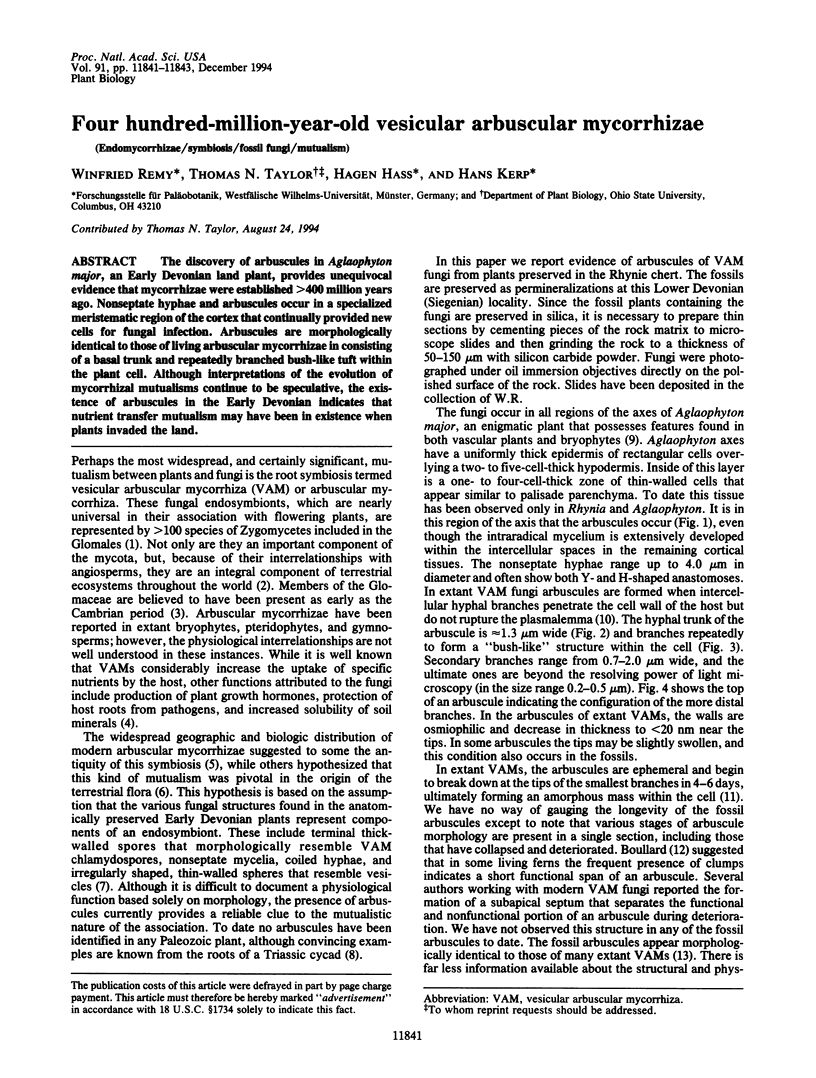
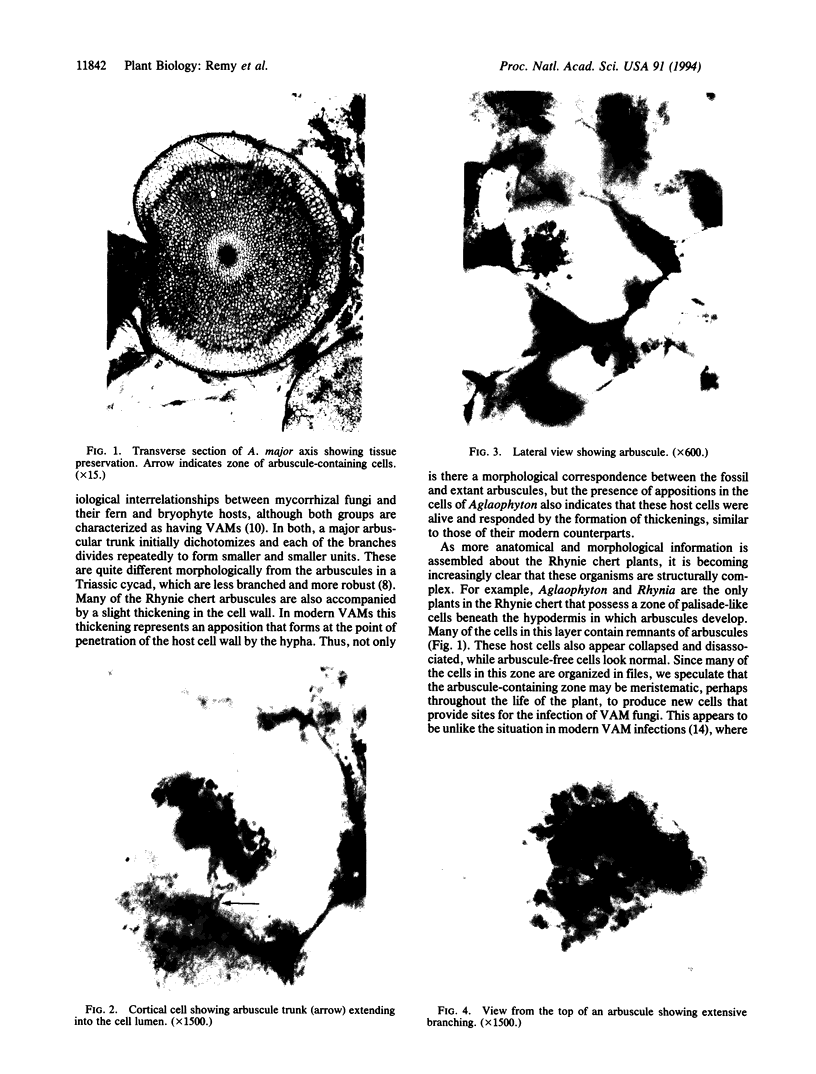
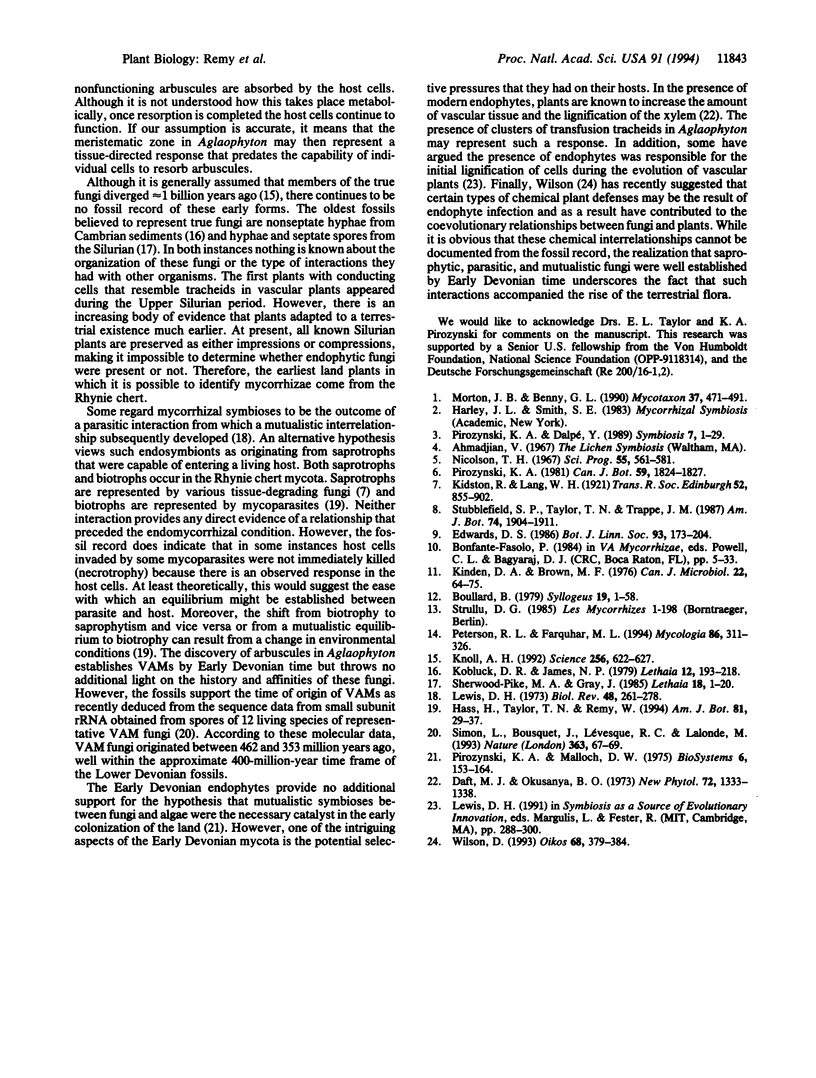
Images in this article
Selected References
These references are in PubMed. This may not be the complete list of references from this article.
- Kinden D. A., Brown M. F. Electron microscopy of vesicular-arbuscular mycorrhizae of yellow poplar. IV. Host-endophyte interactions during arbuscular deterioration 1,2. Can J Microbiol. 1976 Jan;22(1):64–75. doi: 10.1139/m76-009. [DOI] [PubMed] [Google Scholar]
- Knoll A. H. The early evolution of eukaryotes: a geological perspective. Science. 1992 May 1;256(5057):622–627. doi: 10.1126/science.1585174. [DOI] [PubMed] [Google Scholar]
- Pirozynski K. A., Malloch D. W. The origin of land plants: a matter of mycotrophism. Biosystems. 1975 Mar;6(3):153–164. doi: 10.1016/0303-2647(75)90023-4. [DOI] [PubMed] [Google Scholar]



